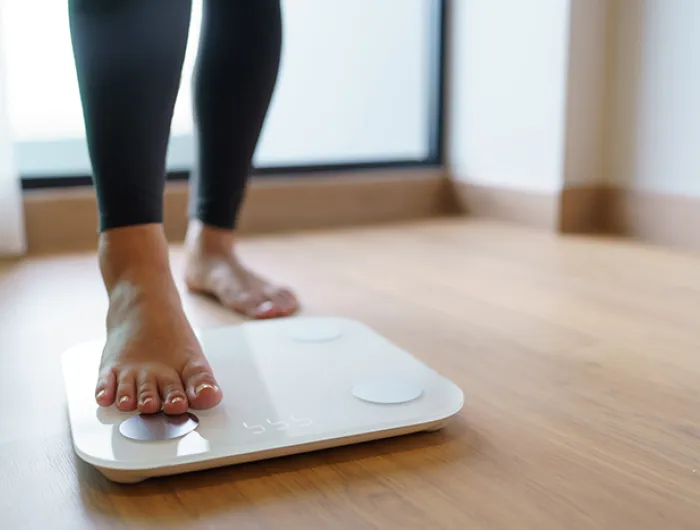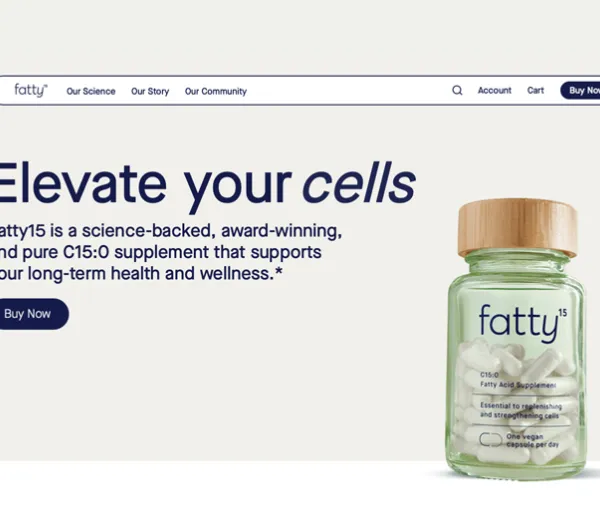Can a GLP-1 supplement help you lose weight?

Charlie's - stock.adobe.com.
GLP-1 drugs like Ozempic, Wegovy, and Zepbound can slash weight by 15 to 25 percent. So it’s no surprise that the supplement industry is trying to cash in on the drugs’ success. You can buy any number of GLP-1 supplements that claim to boost the body’s natural GLP-1 levels. But don’t expect to see results anywhere near what you’d get from a drug. Here’s why.
What is GLP-1 and how do GLP-1 drugs work?
GLP-1 (or glucagon-like peptide-1) is a hormone secreted by cells in your gut after you eat. It helps control blood sugar, slows the rate at which food leaves your stomach, and blunts appetite. GLP-1 drugs mimic those actions of natural GLP-1, but with a lot more power.
That’s because natural GLP-1 is gone almost as quickly as it appears: Within a few minutes, your body has already broken down most of it. Ozempic (sold as Wegovy for weight loss) is a version of GLP-1 that resists that rapid breakdown, so it circulates in the blood for up to a week at far higher levels than natural GLP-1. Mounjaro (branded as Zepbound for weight loss) is a slow-to-break-down version of both GLP-1 and the similar hormone GIP (glucose-dependent insulinotropic polypeptide).
GLP-1 drugs are the most effective non-surgical weight-loss tools we have, helping people with excess pounds drop 15 to 25 percent of their weight. Supplements that claim to boost your levels of natural GLP-1 are often marketed as an alternative to GLP-1 drugs. That’s a tall order…and the supplements don’t come close to filling it.
Do GLP-1 supplements work?
GLP-1 supplements come in all shapes and sizes—from pills to powders to patches. Here’s an example of each.
Lemme GLP-1 Daily
In September 2024, Kourtney Kardashian’s supplement brand, Lemme, announced the launch of its new GLP-1 supplement. “I’m excited and proud of our cutting-edge formulation that uses both clinically-studied and patented ingredients to increase GLP-1 levels in the body, naturally,” Kardashian said in the press release.
Lemme GLP-1 Daily contains three active ingredients: Eriomin (a lemon fruit extract), Supresa (a saffron extract), and Morosil (an extract of Moro red oranges). (Similar ingredients are often used in otherGLP-1 supplements.)
No studies have tested either Lemme or any combination of its ingredients. And the evidence on its individual components is skimpy.
Eriomin
Eriomin has been shown to “increase GLP-1 levels and support healthy blood sugar levels in the normal range,” says Lemme.
Three randomized trials have tested Eriomin’s effects on GLP-1 levels in people with prediabetes or type 2 diabetes. (No studies have tested it in people with normal blood sugar.) But none of the studies are what you could call high-quality research. All three were funded by Eriomin’s manufacturer and conducted by the same group of researchers. All three were small. All three were short (they tested 200 milligrams a day of Eriomin—the same dose used in Lemme—for just 12 weeks). And in one of the studies, 16 of the 45 participants dropped out before the study ended.
What did they find? Nothing to write home about. For starters, Eriomin takers didn’t lose weight in any of the studies. As for blood glucose, in one study, there was no difference between the Eriomin and placebo takers after 12 weeks. In another, the authors didn’t report differences in blood glucose between the two groups, though they appear to be no different. And in the third, blood glucose levels were lower (by a modest 5 percent) in the Eriomin takers than in the placebo takers.
Lemme makes much of the fact that, in two of the studies, fasting levels of GLP-1 were 15 to 20 percent higher in the Eriomin group than in the placebo group. But those results are likely irrelevant. Why?
It’s not clear that fasting levels of GLP-1 tell us anything useful because the intestine releases GLP-1 following a meal, and it’s that post-meal surge—not levels when you haven’t eaten—that’s beneficial for blunting appetite and helping the body clear blood sugar.
More importantly, a 15 to 20 percent bump in naturally occurring GLP-1 doesn’t hold a candle to a GLP-1 drug. Circulating levels of Wegovy, for example, are roughly 230,000 to 760,000 percent higher than the naturally occurring GLP-1 levels that were measured at the end of the Eriomin studies.
So it’s no surprise that weight didn’t change in any of the Eriomin studies. Naturally occurring GLP-1 can’t compete with the long-lasting drugs.
Morosil
Morosil can “fight visceral fat, activate metabolism and support healthy weight management” when used “along with healthy diet and exercise,” says Lemme’s website.
In the study in question (funded by Morosil’s manufacturer), researchers randomly assigned 136 adults with excess weight to take 400 mg of Morosil or a placebo every morning. All the volunteers were also asked to walk for 30 minutes three days a week and to follow a calorie-controlled diet.
After six months, the Morosil takers had lost 4 percent of their starting weight, compared to 2 percent for the placebo takers. (A typical Morosil taker lost roughly 8 pounds, vs. 4.5 pounds for a typical placebo taker.) That’s a far cry from the 15 to 25 percent weight loss seen in the GLP-1 drug trials. Waist circumference also dropped, by about 1.5 inches in the Morosil takers, vs. about 0.7 inches in the placebo takers. People taking a GLP-1 drug lose between 5 and 7 inches around their waist. And despite Lemme’s claims about Morosil activating metabolism, the study didn’t measure metabolism. No other studies have replicated those findings.
Supresa
In a company-funded study, researchers randomly assigned 60 women to take either 176.5 mg of Satiereal (the active ingredient in Supresa, and the amount in Lemme’s supplement) or a placebo every day. “Within 8 weeks, 69% of Supresa participants reported a decrease in hunger,” claims Lemme’s website.
That’s true. But so did 54 percent of the placebo takers, a fact the website doesn’t mention. Nor does it report the primary results from the study: After eight weeks, there was no difference in weight between the groups. Curious omissions.
All in all, Lemme’s claims hinge on a handful of company-funded studies with ho-hum results that Lemme tends to overstate. Is that evidence compelling enough to drop $80 for a one-time one-month supply? Hardly.
Flatter Me Fiber GLP-1 Booster by Hum
“Doubles GLP-1 levels after one use to curb appetite,” says the website for Flatter Me Fiber GLP-1 Booster, a supplement powder that contains prebiotic fiber, digestive enzymes, and herbs like peppermint leaf, fennel, and ginger.
In the study the company was referring to, 19 volunteers ate a test meal along with a tea containing either 0, 5, or 10 grams of the fiber in Flatter Me on three different occasions. (The study was co-authored by an employee of—and was funded by—the company that makes the fiber.) GLP-1 blood levels during the four hours following the meal were higher when the volunteers drank the tea with 10 grams of fiber versus 0 or 5 grams. (Flatter Me says that GLP-1 doubled, but the study authors don’t give a level. From our read, it looks like levels were about one and a half times higher, not twice as high.)
The authors also reported that the 10-gram—but not the 0-gram or 5-gram—dose blunted feelings of hunger and increased feelings of fullness for the first 1½ hours after eating the meal, though the differences were so small that it’s hard to believe they were statistically significant.
And that’s the only study. No others have looked at the effect of Flatter Me’s fiber on GLP-1 levels, appetite, or anything else.
What’s more, if you used Flatter Me Fiber GLP-1 Booster powder every day, a jar ($30 for a one-time purchase) would only last 10 days. Oops.
The Flatter Me Fiber GLP-1 Booster website also claims that the supplement can help reduce bloat by up to 2 inches of waist circumference. A previous formulation—before they hopped on the GLP-1 bandwagon—made the same claim. You can see our take on that evidence here.
GLP-1 Patches from Kind Patches
The folks over at Kind Patches are certainly keeping things interesting. Swallowing a supplement is so 2024. Instead, just slap on a patch—it contains B vitamins, L-glutamine, chromium, and extracts of berberine, pomegranate, and cinnamon—for 8 hours a day. Easy!
“I got these GLP-1 stimulators, a natural version of Ozempic,” says a satisfied customer (presumably a social media influencer) in a video featured on Kind Patches’ website. “I absolutely can say that I’m snacking way less…it’s supposed to stimulate GLP-1, which overall is going to help balance your blood sugar.” Can’t beat that kind of testimonial!
Kind Patches claims that a survey of people taking berberine reported having reduced their food intake by 47.5 percent. Really? They cut out nearly half their food? First, it’s not clear that those results are about people using Kind Patches. Second, no matter what pill, powder, or patch they were using, those results are pretty much impossible to believe.
How, exactly, are GLP-1 patches supposed to work? According to the company, the ingredients are absorbed through the skin straight into the bloodstream. “This bypasses the digestive system, potentially enhancing bioavailability and minimizing the risk of stomach upset or digestive problems.”
But do they actually work? The website says that customers experience increased GLP-1 levels after two months of use and healthy weight loss after three months. Based on what? Who knows? Kind Patches never responded to our email asking for more details about those claims.
Bottom line: GLP-1 supplements are all about the marketing. If you try one, don’t expect to see more than just a shadow of the weight loss (at best) that people experience from a GLP-1 drug.
Support CSPI today
As a nonprofit organization that takes no donations from industry or government, CSPI relies on the support of donors to continue our work in securing a safe, nutritious, and transparent food system. Every donation—no matter how small—helps CSPI continue improving food access, removing harmful additives, strengthening food safety, conducting and reviewing research, and reforming food labeling.
Please support CSPI today, and consider contributing monthly. Thank you.
More on weight and health
Is Fatty15 worth the hype?
Fact vs. Fiction

Testosterone therapy is all the rage. Is it safe…or effective?
Preventing Disease

Food safety, health, and nutrition news: Nov. 3, 2023
Sugary Drinks
Could alternate-day fasting help you lose liver fat?
Preventing Disease

"Lose money fast with Dr. Phil's pills!"
Healthy Eating


